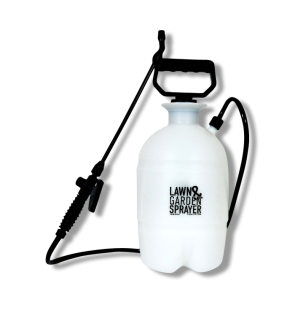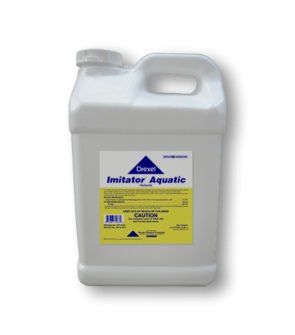Gain access to personalized product screening, the best pricing, rewards, and more!
Most Effective Products
Brazilian Pepper Tree Control: How To Get Rid of Brazilian Pepper Tree
The Brazilian pepper tree is an aggressive, invasive tree that has grown in prominence recently due to its spread across the Southern US. The tree was introduced in Florida as an ornamental and has since spread beyond the state into Texas and even as far as California. Brazilian pepper trees invade aquatic and terrestrial habitats, choking out native plants.
The Brazilian pepper tree was originally brought into the United States in the mid-1800s but is native to South America, particularly in Brazil and Paraguay. A notable feature of the tree is its tendency to be irritable to the skin. It is part of the same family, and poison ivy, oak, and sumac are classified. It is also known to cause breathing problems for others due to its peppery scent heightened during the blooming period.
If a Brazilian pepper tree has grown on your landscape, this guide can help. Read on to learn more about this tree and how to effectively get rid of it using our professional-quality herbicide products.
Identification

Proper identification of a Brazilian pepper tree is important because it can often be mistaken for the holly tree, a native tree. Misidentification can lead to using the wrong treatment methods and products, ending up wasting you wasting time and money. Below, you can find the common traits that identify Brazilian pepper trees:
- You can determine if the plant you see is a Brazilian pepper Tree by looking at the leaf structure. The leaves are alternately arranged on the stem, and each leaf comprises smaller leaflets of an odd number, usually seven to nine. A native holly tree will have a simple singular leaf.
- The leaves of a Brazilian pepper also have a reddish color, and most importantly, when you crush the leaves, you will get a smell similar to turpentine. The fruits of the Brazilian pepper tree will be in clusters. They will be glossy, green, and juicy at first, but eventually, they become bright red once ripened. The holly tree also has red berries, so these trees can often be confused with one another.
Use our description and image above to help you identify the Brazilian pepper tree in your landscape. If you are having trouble identifying the tree, contact us, and we will properly identify the plant for you and offer herbicide product recommendations for control.
Inspection

Where to Inspect
Observe the Brazilian pepper tree closely before treatment and determine its level of maturity. The Brazilian Pepper tree can vary from a small shrub to a large tree that can grow to over 30 feet in height and live for over 30 years. Its leaves are reddish, and it has white flower clusters. This plant flowers from September to November and usually matures by December.
What To Look For
A tree with bright red berries and brilliant green foliage. The plant also has a distinct peppery smell when a leaf or branch is broken.
Treatment
Be sure that when handling any herbicide, you are properly protecting your skin and eyes with safety equipment (goggles, gloves, and long-sleeved clothing)
To kill the Brazilian pepper tree, you either chemically treat the tree stem (which involves cutting the tree down to a stump) or spray the leaves. We recommend triclopyr products like Triclopyr 4 Brush Killer (Garlon 4). We also recommend using marking dye to mark sprayed plants.
Step 1: Cut Down The Tree To A Stump
Cut the tree down to the stump as low as you can. The best way to do this is by using a saw so that you can cut the trunk as close to the ground as possible. Within 5 minutes of making that cut, you must apply an herbicide containing the active ingredient of triclopyr.
The best time to cut Brazilian pepper trees is when they are not fruiting because seeds contained in the fruits can produce new Brazilian pepper trees. If Brazilian pepper trees with attached fruits are cut, care should be taken to dispose of them so as not to spread the fruit to locations where it could cause future problems. Fruiting Brazilian pepper trees can be controlled using a basal bark herbicide application.
Step 2: Apply Triclopyr 4
Triclopyr 4 is a triclopyr-based herbicide that works systemically down to the tree's root to halt growth.
When spraying a large volume of stumps, mix Triclopyr (preferably with a marking dye) into a sprayer at a rate of 20 to 30 gallons of Triclopyr in enough Methylated Seed Oil to make 100 gallons of spray solution. For a single tree, use a handheld pump or backpack sprayer,
Mix 13 oz. of Triclopyr 4 in 115 oz. of MSO to make a 1-gallon spray solution. Apply it as carefully as possible to the thin layer of living tissue called the cambium just inside the stump's bark. The treated area should be thoroughly wet but not apply to the point of runoff.
Alternatively, you can spray the foliage without cutting down the tree. Apply the Triclopyr directly to the foliage or leaves of the trees. This foliar application will result in wilting of the leaves. The herbicide will be moved throughout the parts of the tree, thus effectively controlling the Brazilian pepper tree.
Prevention
After Brazilian pepper trees have been removed, ensure it does not return. Following the listed preventative measures below to prevent Brazilian pepper trees:
- The Brazilian pepper tree is likely to regrow, so you'll need to go over your land regularly with Triclopyr 4 for at least six months after elimination to locate and treat unwanted Brazilian pepper tree seedlings and plants that are missed or only partially damaged by the initial spray treatment.
Key Takeaways
What are Brazilian Pepper Trees?
- Brazilian pepper trees are a beautiful yet invasive tree known for the tendency of their leaves to be irritable to the skin.
How to Get Rid of Brazilian Pepper Trees
- Our top recommendation for treating Brazilian pepper trees is a post-emergent treatment of Triclopyr via cut stump treatment or application to the foliage.
Prevent Brazilian Pepper Tree Reestablishments
- Due to the likelihood of the plant regrowing, regular monitoring and reapplication may be necessary for at least six months after the tree is removed.
















